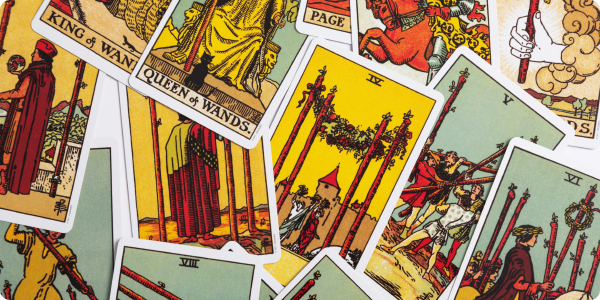What Is a Jester?
Jesters are mentioned throughout history and have a beloved history steeped in royal courts and entertainment. But these characters are more than just jokers, clowns, or performers. Their vibrant history is deeply interesting and full of shenanigans, jokes, and – of course – entertaining stories.
In general, they are defined as jokers or clowns who perform for an audience.
According to the Collins English Dictionary, the definition of a jester is “the person whose job it was to do silly things in order to make people laugh.”
These professional jesters were known for their ridiculous behavior and were the forerunner to today’s professional clown set.
Most popular in the medieval court, Tudor, and Renaissance times, a professional fool employed a variety of talents while traveling with royalty. They needed to keep the royals and nobles both entertained and amused in order to keep their job. Monarchs also employed jesters to keep their guests entertained and spirits up, other duties these professionals were happy to take on. Personal jesters were considered important parts of the royal and Medieval court and often could be found wherever the kings, royalty, and noblemen were throughout the middle ages and beyond, all around the world.1
These beloved entertainers were almost always dressed up in some type of costume that acted as a disguise. This, of course, was to enhance their entertainment and tales, but there was another reason for the masks, ruffles, and frills too: protection. Since a court jester often joked about famous people, like kings and queens, who could do serious damage when offended (we’re talking royalty and even Catholic priests or bishops!), they often felt more comfortable speaking their minds when they weren’t easily recognizable.

Stańczyk during a ball at the court of Queen Bona in the face of the loss of Smolensk
by Jan Matejko

A jester shown with a marotte in a 1540 woodcut by Heinrich Vogtherr the Younger
While sometimes playing the part of a fool or buffoon, they were actually quite savvy.
They knew exactly how to lure their audience into a story and keep them there for the duration of the performance, increasing their own fame and prosperity.
They were also skilled at creating stories and experiences that got their crowd participating whether by singing along, laughing at a joke, or even loudly disagreeing with the jester’s point of view.
What exactly were they talking about during their performances? A little bit of everything. Skilled storytellers knew how to create new stories while including familiar people, places, or events that would keep the crowd on the edges of their seats. They also weren’t opposed to creating a whole new story for their audience to follow. Their imaginations knew no bounds, and the people watching were enthralled.
Where Were Jesters Found?
It was common to find jesters in a room full of important guests, but they weren’t just located in fancy castles. It didn’t take long for common peasants to want a taste of jester entertainment and since most peasants were not staples in castles or in monarch circles, these satirists had to branch out to reach this new demographic. Fairs and markets were where the commoners were, and since these jokesters went where the audience was, it was common to see them performing there as well.
Historically, you can find references to a jester as early as ancient Egyptian times.2 Back then, these characters were responsible for entertaining pharaohs and their esteemed guests. But the jester wasn’t just found in Egypt.
There were also similar types of performers in the 14th and 16th centuries, performing for the leaders of the ancient Aztec community. As leaders evolved, the jester followed.
Romans enjoyed entertainment from jokers as well. However, the Romans called them balatrones.3 Performing for tips and money from wealthy guests, a balatrone worked hard to get, and then keep, the attention of those who were paying them for their efforts. A more engaged crowd always meant a bucket more full of tips.
No matter how long the role of a joker had been in play throughout history, most people still think of jesters performing for English nobility. Royal courts hired these professional fools to entertain nobility and guests from the times of Henry VIII to Elizabeth I and James I. You can even find jokers reflected in the writings of the time, with these comic actors showing up in Shakespeare’s plays and an array of books. You can find the fool take on an important role in King Lear as well as the character Feste the Jester in Twelfth Night.

r
Jesters could become quite popular, with crowds even visiting their graves after death. Samuel Johnson, known as Lord Flame in the early 1700s in England, was known as an outstanding actor, singer, and dancer. He worked as a personal jester and as a dancing master at Gawsworth Hall. He was beloved by crowds while he was alive and his fame – or infamy – lives on at his gravesite in unconsecrated grounds in England’s Maggoty Wood in Cheshire.4
Of course, it wasn’t just the nobility in England who were cheering for fools and jokers. King James VI of Scotland once had employed Archibald Armstrong, a professional Scottish jester widely known through his time in history. The two got along splendidly until King James’s jester Archibald eventually was thrown out of the King’s court because he insulted one too many people. This was the delicate balance of being a personal jester or buffoon, knowing how far you could push the boundaries of insult without losing your job or fame.
From ancient Egypt to medieval courts in England to France to Scotland and beyond, the jesters were an important part of daily life for nobles and commoners. However, the job was eventually phased out by the 18th century.

What did jesters actually do? Most jokers and clowns were expert storytellers while some had a sense of humor as well. They knew how to hold the attention of their audience and quickly became experts at their craft while experimenting with new skills that went beyond storytelling or simply telling lewd or crude jokes.
Part actor, part minstrel, and all entertainer, they found that singing or playing an instrument were sure to keep royals captive. Many also used skills like juggling, magic, dance, and even singing into their act to keep their audience engaged and focused on them. In true amusement form, they did whatever they needed to do in order to keep the crowd laughing and talking.5
Of course, jesters are synonymous with joking around. It’s for good reason too. No matter if they were juggling or playing an instrument, they tended to lean to the comic style.
They told jokes and made silly references to anything, everything, and even everyone. They weren’t afraid to tell a joke about notable people who their crowd would know, such as a king or duke or shopkeeper. They knew the right word or story could keep people engaged, enthralled, and watching as long as possible.
These entertaining fools were also not afraid to use their differences to gain notoriety and fame. One of the most famous examples of this is Sir Jeffrey Hudson, a little person who used his small stature to become a favorite performer for English queen Henrietta Maria of France. He became known throughout the area as the Queen’s Dwarf and was a beloved member of the royal court. That is, until he killed someone during a duel and had to be expelled from the court and from his position.
But it goes to show that these professionals were an important part of life, and often found their way into fame based on their words, dances, and stories. They were often known throughout the land where they lived.
Since jokers were found in many places, they were often known by different names. In fact, the name “jester” wasn’t really used until the Tudor times. Before they were known as clowns or fools, these entertainers were sometimes called storytellers or minstrels. Depending on where you lived, you might also have referred to a jester as a dinosaur, border, or fol.
The etymology behind the word “fool” comes from the Latin word follis, which translates to “bag of wind”. This appears to be an excellent root word for the historical and more modern jester as they are always proficient and popular performers.


For those that practice Tarot, the Fool card can pop up during readings. The card itself depicts a person juggling, too distracted to notice they are walking off a cliff or other high place.
Often, the card represents new beginnings or not knowing what to expect in a new life situation.
It can also point to having beginner’s luck.

What Do They Wear?
Always wanting to be the center of attention and draw a crowd, man jester costumes were bright and vibrant. Costumes also typically include a mask or some type of disguise since they didn’t want to be easily identified by the nobility they were often openly mocking.6The first Medieval professionals wore hats that depicted the ears of a donkey or ass, which seemed appropriate. These ears evolved into the floppy three-pointed hat that today’s modern jester is still known for.
Speaking of evolving, jester costumes were the forebears of the common clown costume. The bright colors and patterns were irresistible to the modern clown.

What About the Ladies?
While a jester was most often a man, there are a few examples of females performing the role as well. Jane the Foole was an English jester during the 1500s, performing for Catherine Parr and Mary I.7 She may also have performed for Anne Boleyn, though that has not been widely confirmed. Jane the Foole was the first female jester ever recorded, though she was not the only person. There have been many performers that happen to be women that have done their share of jesting during modern times.
Queen Elizabeth is also rumored to have employed many professional clowns, including Thomasina, who happened to be a female. Thomasina got her start by being inspired by her father, who was also a professional fool for the Bowes Lyon family. Her legacy is often overshadowed in history books by his, so we may never know as much about her.
Find out more about male and female jesters!

Where Are They Now?
There are many examples of fools and clowns throughout history, art, and words in literature. However, their legacies live on through modern retellings of the role. Many entertainers draw some inspiration from the silliness and savviness demonstrated by jester history. Any professional clown employed by local agencies or even large shows like the Cirque du Soleil puts on a colorful costume similar to those worn long ago and uses their many talents to capture the heart and imagination of a crowd.
While today’s professionals might not be performing for a duke or duchess as a part of their entourage, you can find jesters in the arts, whether on television, or on a stage, transforming their stories into literature that will be read for years to come.
Resources:
- jester, or fool. (n.d.). Britannica Kids. https://kids.britannica.com/students/article/jester-or-fool/327575
- Fooling Around the World: The History of the Jester. press.uchicago.edu/Misc/Chicago/640914.html.
- LacusCurtius • Jesters in Ancient Rome (Smith’s Dictionary, 1875). penelope.uchicago.edu/Thayer/E/Roman/Texts/secondary/SMIGRA*/Balatro.html.
- “The Local Mythstorian – King of Chaos.” The Local Mythstorian, thelocalmythstorian.com/king-of-chaos.
- Jester (entertainer) | EBSCO. (n.d.). EBSCO Information Services, Inc. | www.ebsco.com. https://www.ebsco.com/research-starters/literature-and-writing/jester-entertainer
- Admin. “Medieval Jesters Costumes | Medieval Chronicles.” Medieval Chronicles, 9 Dec. 2022, www.medievalchronicles.com/medieval-clothing/medieval-jesters-costumes.
- Sitemanager. “A Brief History: Jane the Fool – Tudors Dynasty.” Tudors Dynasty, 16 Oct. 2020, tudorsdynasty.com/jane-the-fool.

